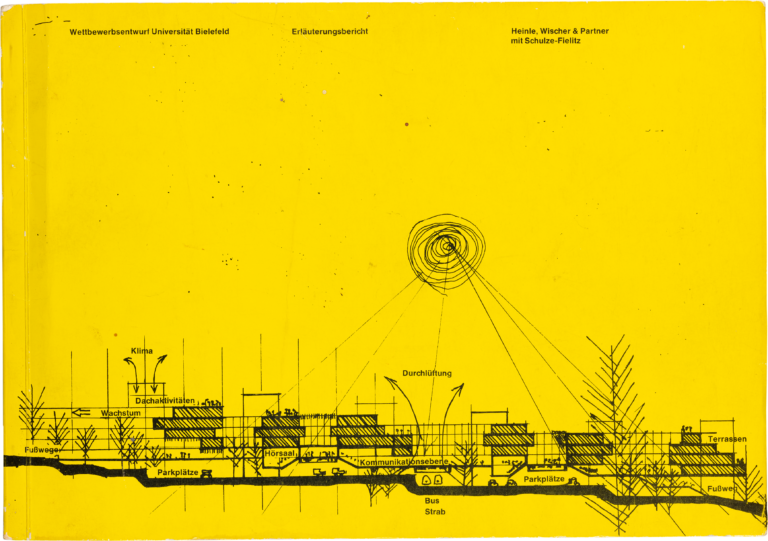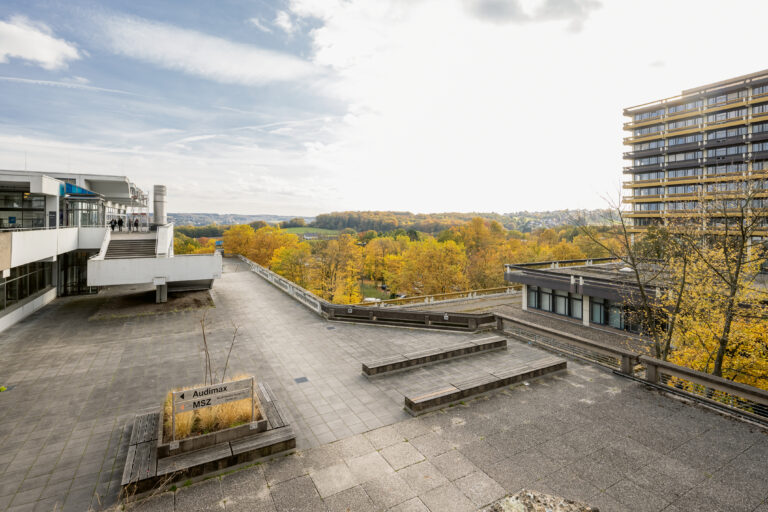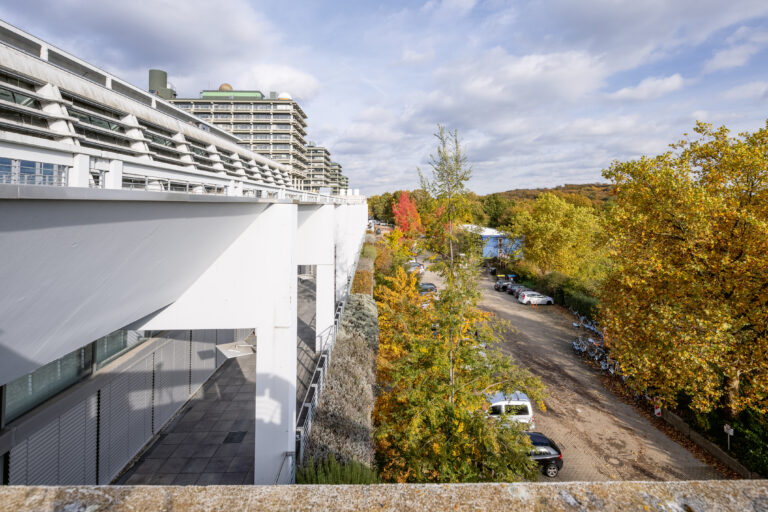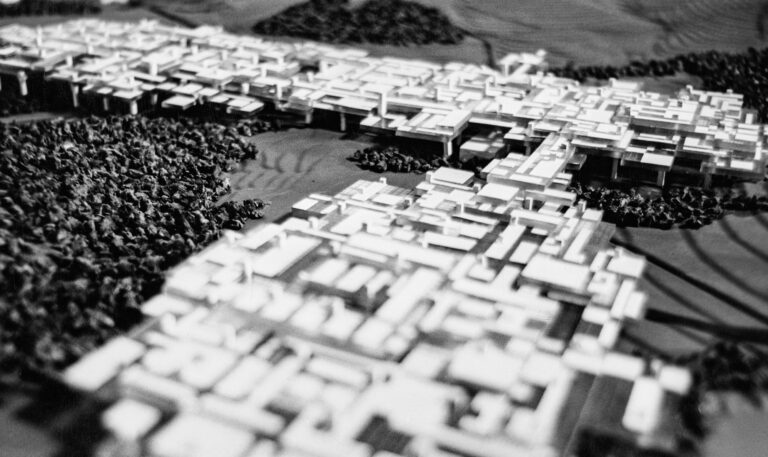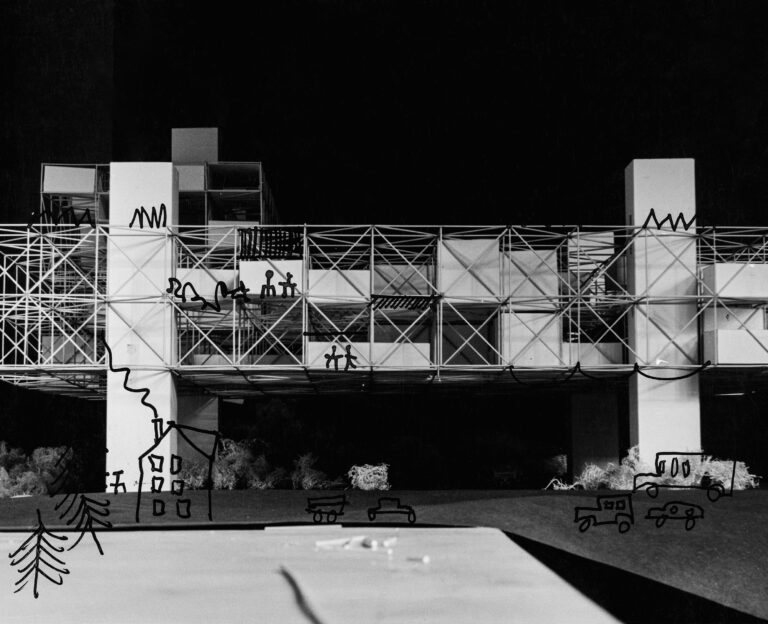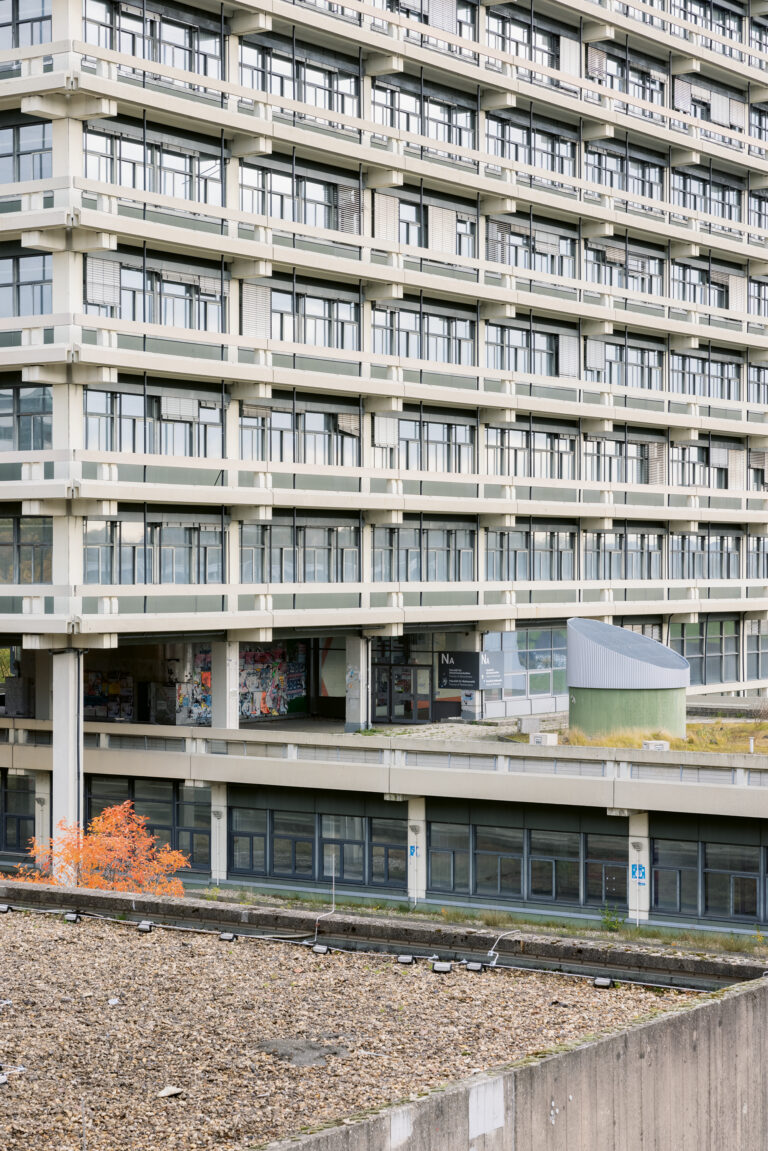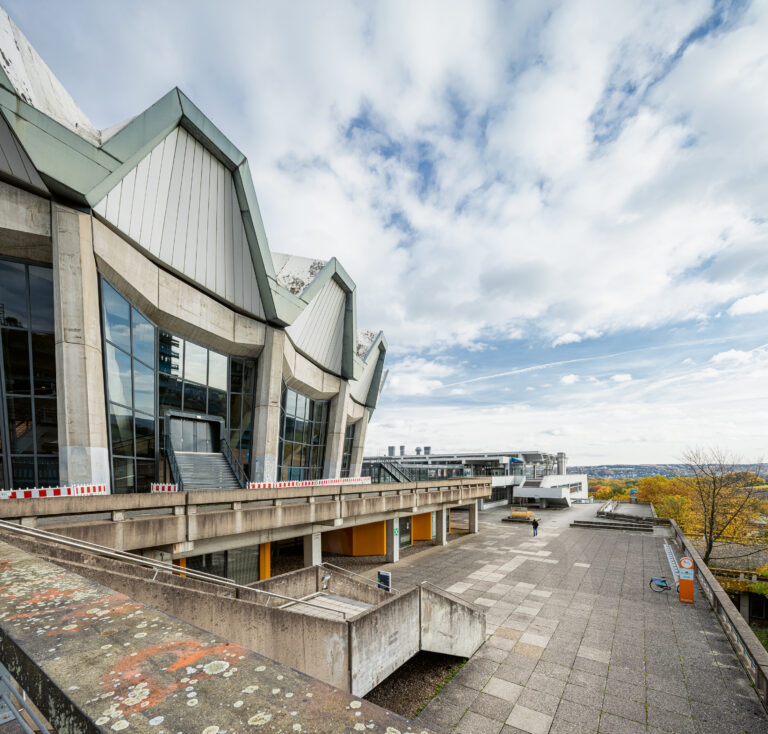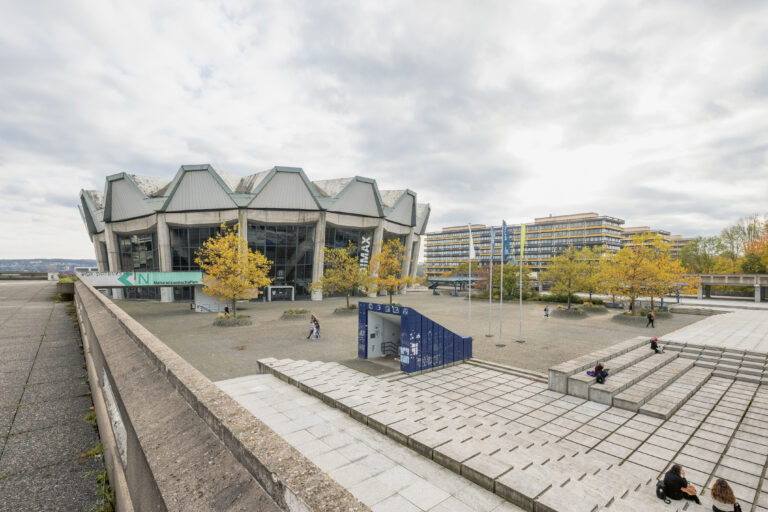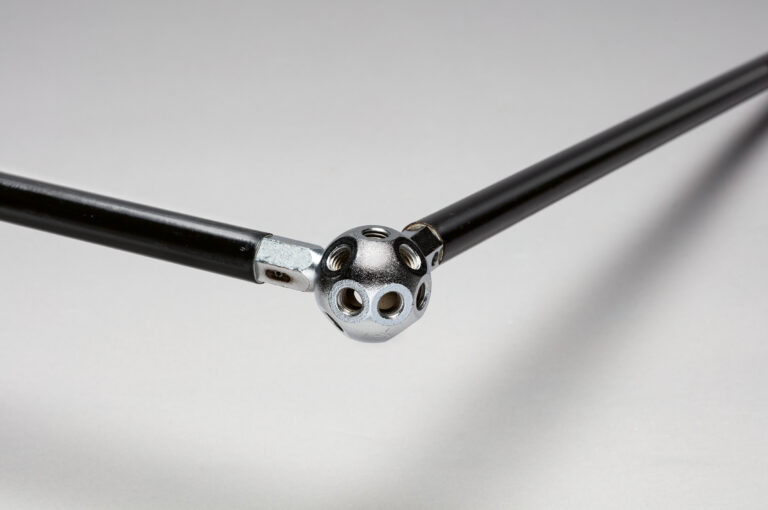The university as a continuum
Ruhr University of Bochum competition design by Eckhard Schulze-Fielitz
Christin RuppioWhen Eckhard Schulze-Fielitz presented his “Raumstadt” (“space city”) concept to a wider audience at the German Building Exhibition (Deubau) in Essen in 1962 using a pavilion built with the MERO rod system, terms such as “utopian” and also “bizarre” were frequently used in the reporting – as can be seen in some of the newspaper articles archived by the architect himself. This shows how utterly unconventional and new his idea of an infinitely extensible architecture appeared, even though it also took up earlier approaches of, among others, Buckminster Fuller and Yona Friedmann. In the Baukunstarchiv NRW, thick folders of archived newspaper articles, letters to the editor and replies to them show that Schulze-Fielitz struck a nerve and participated actively in the discourses of his time.
Groundbreaking for the metropolitan area
Two years later, his Jakobuskirche (St James’ Church, 1962/1963, destroyed by arson in 1980) in Düsseldorf, which was also built using the MERO system, was awarded the Deubau Prize for “Building of the Future”. Reports from this period now repeatedly referred to the Jakobuskirche as proof of the feasibility of Schulze-Fielitz’s visions. Even the BILD newspaper interviewed the young architect for an article on the theme “Can the Ruhr still be saved?” and highlighted his ideas for overcoming differences in levels and density in the vertical as groundbreaking for the metropolitan area on the Ruhr.
In as early as 1959, Schulze-Fielitz had submitted his first ideas on building with prefabricated load-bearing structures in the competition for the Essen Musiktheater(#Aalto-Theatre), where this was at least rewarded with a purchase. In 1962, he again took part in an ideas competition that was significant for the Ruhr region.
Principles of mass production
The Ruhr University of Bochum was to be the first university in the Ruhr region and the fourth university in North-Rhine/Westphalia. At the heart of the thinking behind this new university was the aspiration to offer a large number of students access to academic education and to build this “university for the masses” outside the city on a greenfield site. The competition explicitly stipulated that “the principles of mass production and the application of industrial building methods” were to be observed, which made Schulze-Fielitz an ideal participant. The tubular steel elements, screwed to connecting heads with twelve connection points and already tried and tested on the Deubau pavilion and the Jakobuskirche, were now to be put to use here on a large-scale structure.
Interconnectedness
Schulze-Fielitz opens the explanation of his submission with the sentence: “The university is, by and large, a continuum.” This view of architecture and urban planning ultimately opposes the clear separation of functions and allows for blurring and interpenetration. Here, too, Schulze-Fielitz’s approach seems close to the detailed specifications of the competition, which repeatedly stressed the importance of “interconnectedness” as a characteristic of the university as a living and learning environment. At the same time, Schulze-Fielitz’s design goes so far as to dissolve the functional divisions dictated by the traditional organisation of the university, e.g. into faculties – which was certainly one of the reasons why the design was not awarded a prize.
Neutral structure
A look at photographs of Schulze-Fielitz’s competition model initially reveals above all the high density that the architect wanted to achieve through horizontal layering within a load-bearing framework. Schulze-Fielitz’s firmly believed that “High density in one area allows greater opening elsewhere”. It is photographs of detail models that show how the variable filling of the prefabricated room structures yields a permeable and adaptable structure embodying the concept of “interconnectedness”. Schulze-Fielitz spoke of a “neutral structure” that could be adapted again and again, which would allow it to accommodate the constantly changing educational demands and teaching approaches. The purpose of the load-bearing structures of this “neutral structure” was, firstly, to discharge the loads and, secondly, to house all the supply lines for power and water.
Nature conservation
Due to the ideal distribution of the loads, the load-bearing system was to be able to span large areas, which was of great importance for the sprawling and topographically varied site of the future university. At the same time, the exposed columns under the load-bearing frame created space for extensive traffic routing. The university was to be accessed from the bottom up, with arrival and parking on the lower level before moving up to the continuum. Schulze-Fielitz describes, however, that the “irregular topography” must also be taken into account and that horizontal or diagonal access would therefore also be conceivable in some places. The terrain and the surrounding countryside were further decisive factors in Schulze-Fielitz’s argumentation for densification in the horizontal. For this concentration of all the key elements of the university in a small space was also, in the architect’s view, a matter of nature conservation – an aspect that makes Schulze-Fielitz’s architectural visions all the more relevant to today as well.
Level-by-level layering
This was not Schulze-Fielitz’s last participation in a competition for a university building. In 1967, he competed for the University of Bremen, but subsequently became increasingly disillusioned with decisions in such processes that in his view lacked rationality. The next time he took part in a university competition in Bielefeld, Schulze-Fielitz therefore only entered in an advisory capacity with Erwin Heinle and Robert Wischler. The drawing by Schulze-Fielitz on the cover of the explanatory report shows that he had shelved his radical implementation of the continuum for this collaboration, while retaining such ideas as level-by-level layering for traffic and other uses. In a lecture, Schulze-Fielitz summed up the atmosphere of the 1960s with the claim “Utopias are just around the corner”. The founding of the University of Dortmund (1968), hard on the heels of that of the Ruhr University of Bochum, confirms how much this statement applied to the educational landscape in the Ruhr region.
The present text was first published in: Hans-Jürgen Lechtreck, Wolfgang Sonne, Barbara Welzel (Hg.): Bildung@Stadt_Bauten_Ruhr, Dortmund 2022, pp. 232–243.
